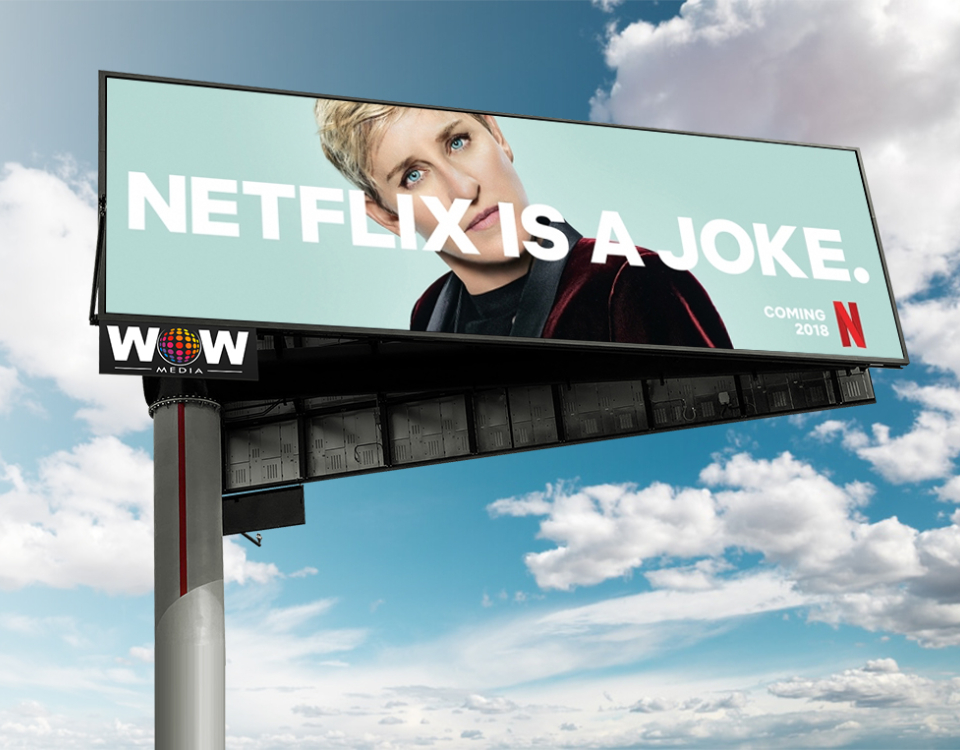
Television ads are a great tool to promote your brand, product or service. They are entertaining and informative and will engage your target audience. But there are a few things to keep your mind in check before you make your next TV ad. You only have a few seconds in which to make a lasting impression with your ads. Make sure that your commercial is engaging, short, and includes relevant people and content.
TV ads that combine humor, satire, or a good story are most effective. Your ad should reflect the emotions of your target audience when you are creating it. People will be more inclined to purchase your products if they are able to relate to them. If your product or service is visually appealing, you can include a photo or video to help your viewers better understand it.
Coca-Cola's "You Love Me” TV commercial is a prime example of a successful TV ad. It's a celebration in Black culture and features many Black performers. It also taps into anti-racist sentiments in the US.

Another great example is the Subaru Shelter Dog Commercial. This ad showcases a dog's relationship with a person, and music is used to reinforce the message.
Another great example of a popular TV ad is the "Super Soaker" campaign. This campaign made it possible for teens to host pool parties. Many of the most memorable ads were produced by big companies with celebrity spokespeople, and they had a major impact on the advertising market.
A lot of advertisers still make a point to advertise their products and services to older consumers. These are typically targeted on shows and programs that target older adults. This audience is not interested in changing their purchasing habits. To reach this segment, brands have to be creative and come up with ways to reach them.
Streaming television is today's largest competitor for advertisers. This is why you should hire a production agency to ensure that your TV ad is as professional as it can be. It is important to ensure that the ad represents your brand accurately. In 1997, Mug Root Beer's ad featured a bulldog named Dog.

In fact, TV commercials that were the most successful in the 1990s focused on storytelling. The ad campaigns of Tootsie Rolls and Wonder Bread, Cheerios, Cheerios, and many others featured music, animated characters, and cameos from well-known actors. Whether your commercial features a narrator reading a script or a character talking to another person, make sure that your ad is based on an emotional experience that your audience will relate to.
In 2020, expect to see more TV commercials. In many of the most popular TV commercials, you will see brands like Old Spice, Bounty, Febreeze, or Febreeze. You'll also find many ads for newer businesses quite funny, if you want to get away from all the drama.
FAQ
How much does it take to advertise on social networks?
It is important to know that advertising on social media platforms is not free if you decide to do this route. You will be charged monthly for your time spent on each platform.
Facebook: $0.10 per 1,000 impressions
Twitter - $0.20 Per 1,000 Impressions (if you tweet).
Send out invitations on Linkedin for $0.30 per 1000 impressions
Instagram: $0.50 per 1,000 impressions
Snapchat - $0.60 per 1,000 impressions ($0.40/user)
YouTube - $0.25/1000 views
Tumblr Text Posts - $0.15 Per 1,000 Impressions
Pinterest - $0.05 per 1,000 impressions per month
Google + $0.15-$0.20 Per 1 Million Impressions
Tumblr $0.15- $0.20 for 100,000 impressions
Vimeo – $0.20- $0.25 Per 10,000 Impressions
Soundcloud – $0.20-$0.25 for 1 million plays
StumbleUpon - $0.20 -$0.25 per 1 billion pageviews
Digg - $0.20- $0.25 for 1000 diggs
Reddit: $0.20-$0.25 for 1000 comments
Wordpress - $0.20 - $0.25 for 500 comments
Flickr - $0.20 -- $0.25 per 5,000 photo uploads
What is an advertising campaign?
Advertising campaign refers to a series of advertisements intended to promote a product. It can also refer to the whole production of such ads.
The Latin word for selling is "ad." The first known use was by Marcus Terentius Varro (116-27 BC), who used it as a verb meaning "to make a sale."
Advertising campaigns are most often done by large agencies or businesses. Advertising campaigns can involve many media types, such as television, radio, print, and the internet.
Advertising campaigns are typically long-lasting and have clear goals. Advertising campaigns can have different goals. Some are focused on increasing sales while others generate awareness.
How do I choose my target audience?
Begin with you and your closest friends. If you don’t know where or how to start, ask yourself "Whom are I trying to reach?"
Ask yourself these questions: Who are the most influential people in my industry? What are the problems they face daily? Who are the smartest people in my industry? Where are they located online?
Start at the beginning of your business. Why did your start? What problem were you able to solve and how did this happen?
These answers will help you identify who your ideal clients are. You'll also learn more about what makes them tick and why they buy from you.
To get clues about who they cater to, you can also check out your competitors' social media pages and websites.
Once you've identified your target customers, you'll need to decide which channel(s) to use to reach them. An example: If you provide services to realty agents, you may create an informational website for home buyers.
A blog that targets small-business owners could be a possibility if you are a software provider.
A Facebook page could be created for clothing sellers. Or if you're a restaurant owner, you could set up a Twitter account for parents looking for kid-friendly places to eat.
You have many options to convey your message.
What is the primary purpose of advertising?
Advertising isn’t about selling products.
Advertising is about communicating your ideas and values to people who already care about what you have to say. It is about changing attitudes and minds. And it's about building relationships.
It is all about making people feel good.
But, if you don’t have a clear understanding of your customers’ needs, you will not be able sell anything.
It is essential to first understand the needs and purchasing habits of your customer before you embark on any advertising project.
This will allow you to create ads that resonate with your target audience.
What are the basics of print advertising?
Print advertising is an effective way to reach consumers. Many companies use print advertising to promote their products. It is designed to attract the attention of the customer.
Print ads are usually short (one page) and contain text, pictures, logos, and other graphics. They may also include sound, animation, video, and hyperlinks.
The following categories are the most common types of print advertisements:
1. Brochures are large-format printed materials that are designed to draw people into shops. Brochures are filled with eye-catching designs, colorful pictures, and attractive graphics.
2. Catalogues- These are smaller versions and variants of brochures. They are sent to customers who have requested specific information.
3. Flyers – These are small pieces made of paper that are distributed at events, such as fairs or concerts. If they are given out at retail outlets, they can be obtained for free, but you must pay for them.
4. Flyers are also available in posters. They are placed on walls, fences, buildings and other surfaces. These are often created with computer software programs to grab the attention of passersby.
5. Direct mail - These are letters or postcards that are sent directly to potential customers. Companies send these out periodically to remind existing customers about their business.
6. Newspaper Ads are placed in newspapers and magazines. They are usually very long and contain text and images.
What should you know about TV advertising?
Television advertising has the potential to reach large audiences at once. It was also expensive. However, it can be powerful if you use the device correctly.
Although there are many types, TV ads share certain common characteristics. When planning any TV ad, the first thing you should do is ensure that it fits within its category. It is not a good idea to try and run a lifestyle TV commercial while running a product or service commercial. Your message should be consistent across the entire campaign.
Second, prime-time hours are the best times to air your ads. This is because the majority of viewers will watch TV while they relax in front a set. You want them to be relaxed enough to focus on your words.
Finally, just because you've a lot of money doesn't mean you'll get great results. The opposite may actually be true. The University of California conducted a study that found commercials shown on popular programs were less likely than those on non-popular programs to sell products. It is important to do the right thing if your TV advertising budget is large.
Advertising: What does it mean?
Advertising is an art form. It's not just about selling products. It's about building emotional bonds between brands and people.
Advertising is about telling stories and using images to communicate ideas.
Communicating clearly and persuasively is key. Your target market should be able to relate to the story you tell.
Advertising is different than other communication methods, such as writing or public speaking.
When you create a winning ad campaign, it is creating your brand identity.
This is how you make yourself memorable. You become someone who people want to remember.
Statistics
- Advertising spending as a share of GDP was about 2.9 percent. (en.wikipedia.org)
- Worldwide spending on advertising in 2015 amounted to an estimated US$529.43 billion. (en.wikipedia.org)
- Advertising's projected distribution for 2017 was 40.4% on TV, 33.3% on digital, 9% on newspapers, 6.9% on magazines, 5.8% outdoor, and 4.3% on radio. (en.wikipedia.org)
- This means that at least 50% of an ad needs to be shown on the screen for at least one second. (quicksprout.com)
External Links
How To
How to run paid advertisements
Paid advertising is any type of marketing where you pay money. This could include buying ad space on websites, placing advertisements in newspapers or magazines, or paying someone to promote your business online. Paid advertising can include display advertising, email marketing or mobile app promotion.
It is important to understand the costs of your campaign as well as the results you are expecting. It is also important to determine if you will get enough return on your investment (ROI).
Before you launch a paid campaign for advertising, you must first establish if potential customers are interested in your product or services. If you do not know, you can begin with free advertising by posting flyers in your neighborhood, making announcements to schools or sharing your message on social networks.
Once you've identified your target audience, the best way of reaching them is determined. For example, if you sell organic food, you may want to advertise in local newspaper classifieds. On the other hand, if you sell cosmetics, you might choose to advertise on TV or radio stations.
After deciding who you want your message to reach, determine how much you can spend. There are many ways you can calculate your budget. The first is to divide the budget into daily or weekly, monthly, quarterly, annual, and/or quarterly amounts. Another way to do this is to use a spreadsheet software.